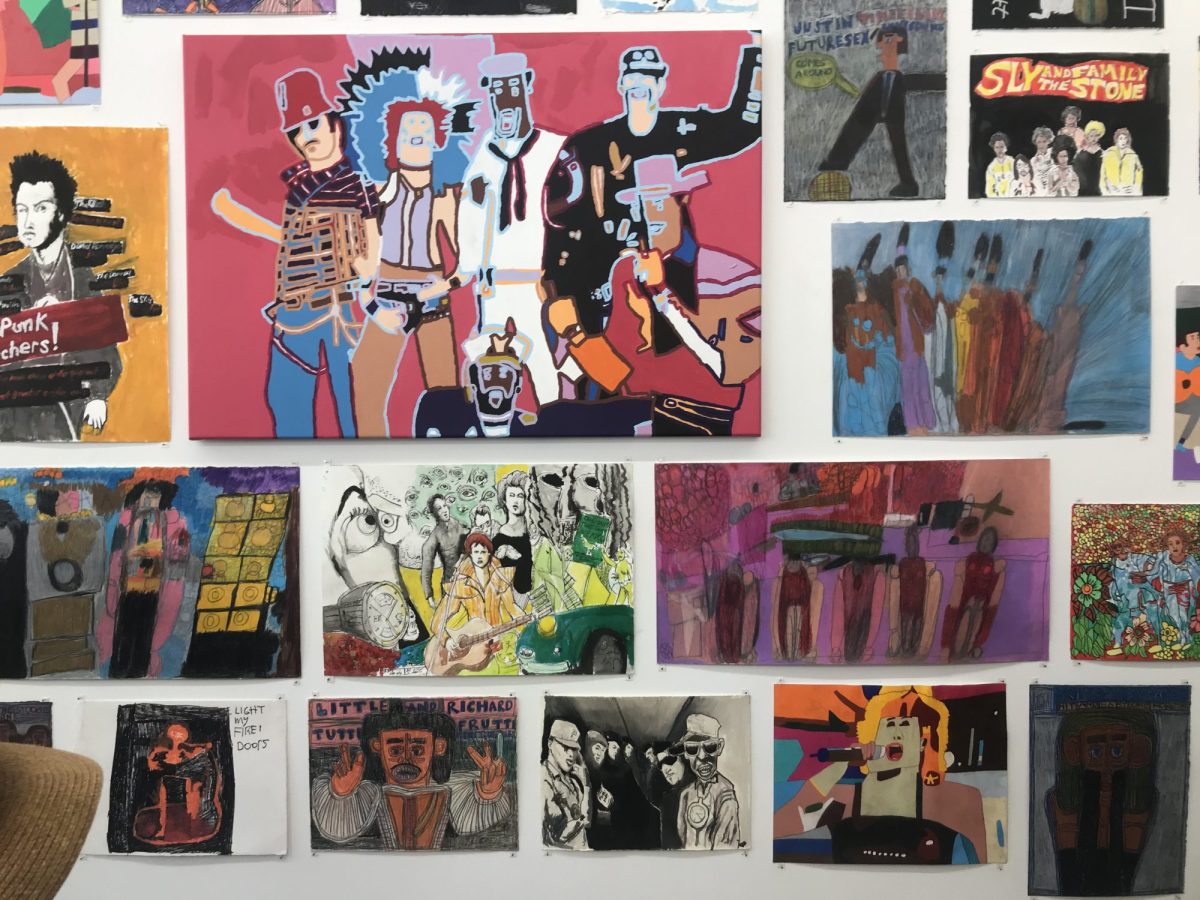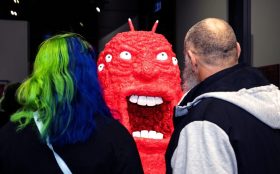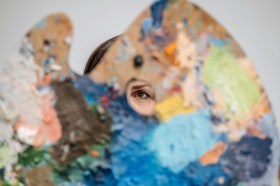In recent years, the call for greater inclusion in the arts sector has led to increased representation of neurodivergent artists in exhibitions, stage productions and on our screens. Yet conversations about these artists often fail to convey the aesthetic merit and intrinsic value of their work.
Recently, ArtsHub published a four-star review of Devoted to You, an Arts Project Australia (APA) exhibition at our Collingwood Yards gallery. The piece was online for less than 24 hours before being quietly taken down. Its removal raises important questions – not only about editorial standards but also the broader discomfort the art world has in engaging with artists with disabilities. Too often, media coverage or critical analysis falls into familiar traps: infantilisation, sentimentality or an overemphasis on the artist’s disability. Even well-intentioned writers can struggle to engage critically with the work itself, centring narratives of inclusion and diversity as though they were the defining features of the art.
I have seen this time and again since becoming Executive Director of Arts Project Australia, an internationally leading visual arts organisation that champions neurodivergent artists and artists with intellectual disability. For 50 years, APA has advocated for the rightful place of our artists within contemporary art. Rather than being driven by a therapeutic model, our focus is – and always has been – artistic excellence. Yet, more often than not, discourse around APA artists highlights their disabilities rather than the aesthetic or conceptual qualities of their work. Whether in curatorial essays, reviews, news features or public conversations, engagement with the art created in our studio frequently fails to consider the work on its own terms. Instead, APA artists are positioned within a broader conversation about inclusion rather than recognised as producing work that deserves critical consideration.
Art created by people who belong to neurominorities requires a framework that moves beyond the prevailing academic reliance on biographical details or conceptual frameworks. Instead, we need to talk about these practices in a way that aligns more closely with the artist’s creative process and intent. Tiarney Miekus recently wrote in Art Guide Australia:
“As someone who worked at Arts Project for a fleeting four years… [I’ve] observed areas of the larger art world shift between over-theorising the artwork by recuperating it into conventional art world schemas (which does and doesn’t work), alongside the inverse reaction of overstating the role of sentimentality and sincerity in art-making. It all posits the need for new aesthetic language to truly articulate the individual practices of APA artists.”
Read: The benefits of accommodating neurodiverse performers
This is where the art world must do better. Like many before it, ArtsHub’s now-unpublished review sidestepped meaningful engagement with the work itself, instead retreating into familiar and, at times, patronising tropes. Framing an artist’s work as unique simply because they have a disability undermines their artistic practice, livelihood and lived experience. It is not enough to ‘celebrate’ disabled artists; we must take them seriously. The artists featured in Devoted to You are not participating in a side conversation within art history – they are a part of art history and deserve the same critical engagement as any other practising artist.
Of course, all of this speaks to broader structural barriers that keep artists with disabilities at the margins. While milestones have been reached – perhaps most notably TarraWarra Museum of Art’s recent exhibition Intimate Imaginaries, featuring over 160 works by 13 artists from Arts Project Australia – the contemporary art world still has a long way to go. At Arts Project, we often find that while institutions and curators want to work with our artists, it is usually within the context of public programs, community gallery spaces or access initiatives. To my mind, TarraWarra is the first major Australian museum that profiles neurodivergent artists and artists with intellectual disability.
That is not to say that APA artists haven’t achieved visibility and recognition. Last year, for example, our ‘Northcote Penguins’ studio group was awarded the prestigious Miegunyah Creative Fellowship from the University of Melbourne, which resulted in a series of new commissions and an exhibition at Buxton Contemporary. Arts Project veterans like Alan Constable, Lisa Reid and Chris O’Brien are included in major public collections in Australia and overseas. Our booth at Melbourne Art Fair is a sellout year after year, demonstrating strong interest and support from collectors. Nevertheless, the responsibility for advancing the calibre and scale of such opportunities should not rest solely on the shoulders of the artists and their advocates; greater commitment from our peers and colleagues is integral to achieving systemic change.
Internationally, there are countless examples of this kind of sector leadership. San Francisco Museum of Modern Art (SFMOMA), for instance, recently acquired over US$500,000 worth of artwork from Creative Growth, APA’s Oakland-based sister studio. Project Art Works, a Hastings-based collective of neurodivergent artists, featured prominently in the most recent edition of documenta and presented a major exhibition at Copenhagen Contemporary last year.
Imagine how we could shift understanding around disability here in Australia if state galleries and museums made similar commitments. Public galleries could become vibrant places where diverse audiences of all abilities feel seen, represented and valued. These institutions could go beyond gestures of inclusion by actively acquiring and presenting art made by disabled artists and, subsequently, contribute to a much-needed revision of the art historical canon. In these reimagined spaces, access would not only focus on breaking down barriers to visitation, but also on fostering meaningful scholarship that elevates the work of artists with disability.
Read: Take us as we are – empowering neurodivergent and disabled experiences in the arts
Changing all of this requires a shift in perception and practice. We need curators, critics and institutions to move beyond the staid binaries of ‘inspiration’ or ‘pity’ and instead engage deeply with artists from neurominorities. Galleries and museums need to exhibit divergent voices and embed them fully into the fabric of their collections and programming. Writers and reviewers need to work harder to find new and embodied ways to frame the work of artists with disability. And we need the art world to actively dismantle its biases rather than performatively signal toward inclusion.
The success of Devoted to You is not that it showcased disabled artists – it is that it presented a compelling, complex and rigorous body of work that expands contemporary artistic discourse and does so in a way that engenders mutuality, respect and artistic autonomy. It is time for critics and institutions to catch up. The challenge is not to ‘consider’ or ‘include’ artists with disability as a gesture of goodwill but to recognise the importance, longevity and influence of their work.
APA is based in the inner Melbourne suburb of Collingwood. Current exhibitions include Magpie and Mates at Benalla Art Gallery, Metropolis in APA’s in-house gallery and Organs at Daine Singer in Brunswick.





